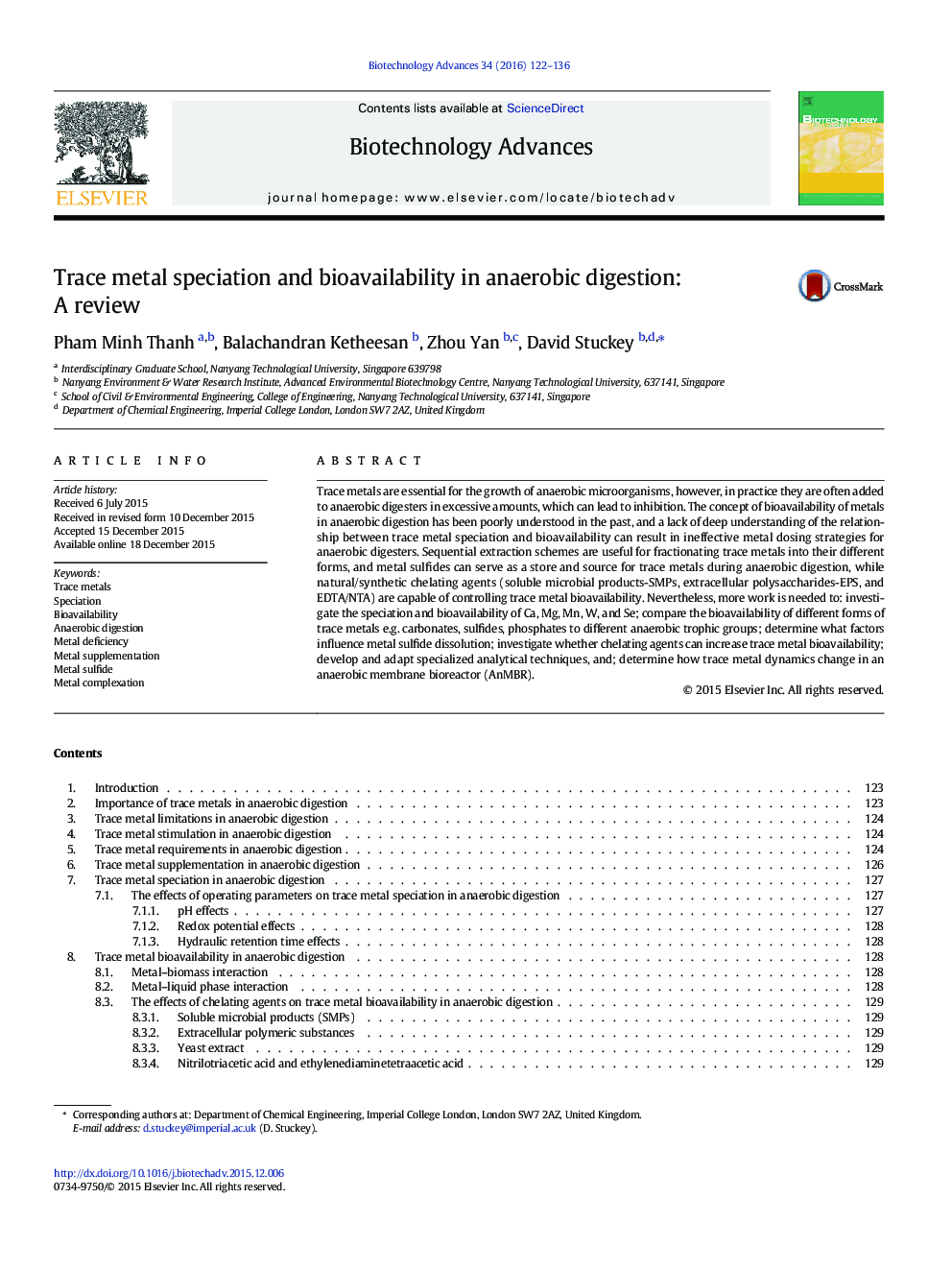| Article ID | Journal | Published Year | Pages | File Type |
|---|---|---|---|---|
| 14187 | Biotechnology Advances | 2016 | 15 Pages |
•Summarizes recent studies on the concentration of essential metals required for various anaerobic digestion systems•Critically reviews the effects of operating parameters on metal speciation in anaerobic digesters•Looks at recent and novel analytical techniques to determine metal speciation and evaluate metal bioavailability•Highlights the lack of an in-depth understanding of trace metal speciation and bioavailability in anaerobic digestion•Identifies the gaps and research needs in the area of trace metal speciation and bioavailability in anaerobic digestion
Trace metals are essential for the growth of anaerobic microorganisms, however, in practice they are often added to anaerobic digesters in excessive amounts, which can lead to inhibition. The concept of bioavailability of metals in anaerobic digestion has been poorly understood in the past, and a lack of deep understanding of the relationship between trace metal speciation and bioavailability can result in ineffective metal dosing strategies for anaerobic digesters. Sequential extraction schemes are useful for fractionating trace metals into their different forms, and metal sulfides can serve as a store and source for trace metals during anaerobic digestion, while natural/synthetic chelating agents (soluble microbial products-SMPs, extracellular polysaccharides-EPS, and EDTA/NTA) are capable of controlling trace metal bioavailability. Nevertheless, more work is needed to: investigate the speciation and bioavailability of Ca, Mg, Mn, W, and Se; compare the bioavailability of different forms of trace metals e.g. carbonates, sulfides, phosphates to different anaerobic trophic groups; determine what factors influence metal sulfide dissolution; investigate whether chelating agents can increase trace metal bioavailability; develop and adapt specialized analytical techniques, and; determine how trace metal dynamics change in an anaerobic membrane bioreactor (AnMBR).
